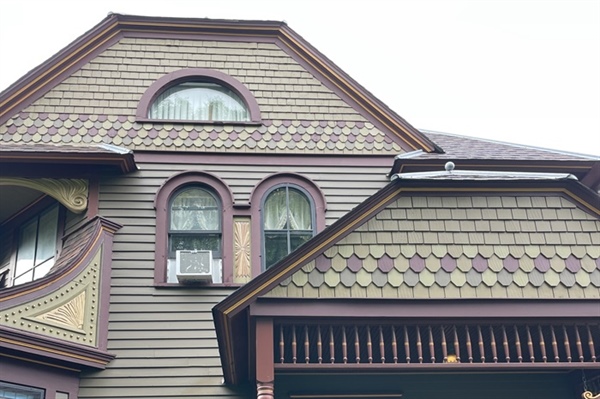Superior Surface Prepration: What Goes Into a Long-Lasting Paint Job?

A long-lasting paint job is not just about picking the right color; it’s about the meticulous preparation that ensures durability, adhesion, and a flawless finish. Superior surface preparation is what separates a professional-looking result from a paint job that chips, peels, or fades prematurely. Each step in the preparation process plays a crucial role in creating a smooth, long-lasting surface that will stand the test of time.
In this article, we will explore five critical steps to achieving a durable and high-quality paint job. We begin with cleaning and degreasing, the foundation of proper adhesion. Next, we discuss patching and repairing surfaces to eliminate cracks, holes, and imperfections. Sanding and smoothing follow to create an even base for paint application. Then, we cover the importance of priming to ensure a uniform and lasting finish.
Lastly, we highlight the significance of taping and masking to protect trim, floors, and fixtures. Mastering these steps will guarantee professional-level results, whether for interior or exterior painting projects!
Cleaning and Degreasing: The First Step to Proper Adhesion
Before any paint touches the surface, thorough cleaning and degreasing are essential. Dust, dirt, grease, and other contaminants create a barrier that prevents proper adhesion, leading to peeling or uneven coverage. For interior walls, a mild detergent mixed with water is often sufficient, while exterior surfaces may require power washing to remove grime and mildew buildup.
Degreasing is particularly important in areas prone to oil and residue buildup, such as kitchens and bathrooms. Using a degreaser or trisodium phosphate (TSP) helps break down stubborn stains and ensures a clean surface. Skipping this step can lead to adhesion failure, meaning the paint may lift or blister over time.
Proper drying time is also crucial before proceeding to the next step. Any remaining moisture can interfere with the paint’s ability to bond with the surface, affecting longevity and performance. Learn more about our process to see how professional painters ensure optimal surface preparation.
Patching and Repairing: Fixing Cracks, Holes, and Imperfections
Even minor surface imperfections can show through the paint, affecting the final appearance. Patching and repairing walls, ceilings, and exterior surfaces is crucial to achieving a seamless and polished look. Small nail holes can be filled with lightweight spackle, while larger dents and cracks require joint compound or plaster repair.
For drywall repairs, it’s important to apply multiple thin layers of patching material, allowing each layer to dry completely before sanding. On exterior surfaces, cracks in wood or stucco should be addressed with appropriate fillers to prevent water infiltration, which can cause further damage over time.
Ignoring these imperfections leads to an unprofessional finish and may even compromise the paint job’s longevity. Proper repairs ensure that the paint adheres smoothly and evenly, reducing the risk of premature wear.
Sanding and Smoothing: Creating an Even Surface for Paint Application
Sanding is one of the most important steps in surface preparation. It removes rough spots, old paint, and inconsistencies that can affect how the new paint adheres. For previously painted surfaces, light sanding with fine-grit sandpaper creates the right texture for the paint to grip, preventing peeling and chipping.
When dealing with wood, sanding smooths out grain patterns and eliminates raised edges that can affect the final coat’s uniformity. In drywall repairs, sanding helps blend patched areas with the surrounding surface, ensuring an even application of paint.
Dust removal after sanding is equally important. Wiping down the surface with a damp cloth or tack cloth ensures no residual particles interfere with the painting process, resulting in a flawless finish.
Priming: Why It’s Essential for a Durable and Even Finish
Skipping primer is one of the biggest mistakes in painting. Priming serves multiple purposes, including sealing porous surfaces, providing a uniform base, and enhancing paint adhesion. Without primer, paint may absorb unevenly into the surface, leading to blotchy results.
For surfaces prone to staining, such as water-damaged drywall or wood with knots, stain-blocking primers prevent discoloration from bleeding through the final coat. In high-moisture areas like bathrooms, mold-resistant primers offer added protection against humidity-related issues.
Primer also improves coverage, reducing the number of topcoats required. Investing time in priming leads to a professional-quality finish that remains vibrant and durable over time.
Taping and Masking: Protecting Trim, Floors, and Fixtures Before Painting
Precision in painting isn’t just about applying paint evenly; it’s also about keeping paint only where it belongs. Taping and masking off edges, trim, baseboards, and fixtures ensure clean, sharp lines and prevent accidental splatters.
Using high-quality painter’s tape prevents paint from bleeding under the edges, resulting in crisp lines when removed. For floors and furniture, drop cloths or plastic sheeting provide protection from drips and spills, reducing cleanup time.
Properly applied masking saves both time and effort, allowing for a cleaner, more professional-looking result. This step is essential for achieving a polished, high-end finish, especially in areas with multiple colors or intricate details.
By following these essential preparation steps, painters can achieve long-lasting, high-quality results that stand up to wear and environmental conditions. For expert assistance, reach out Revel Painting online or give us a call at 612-345-9136.